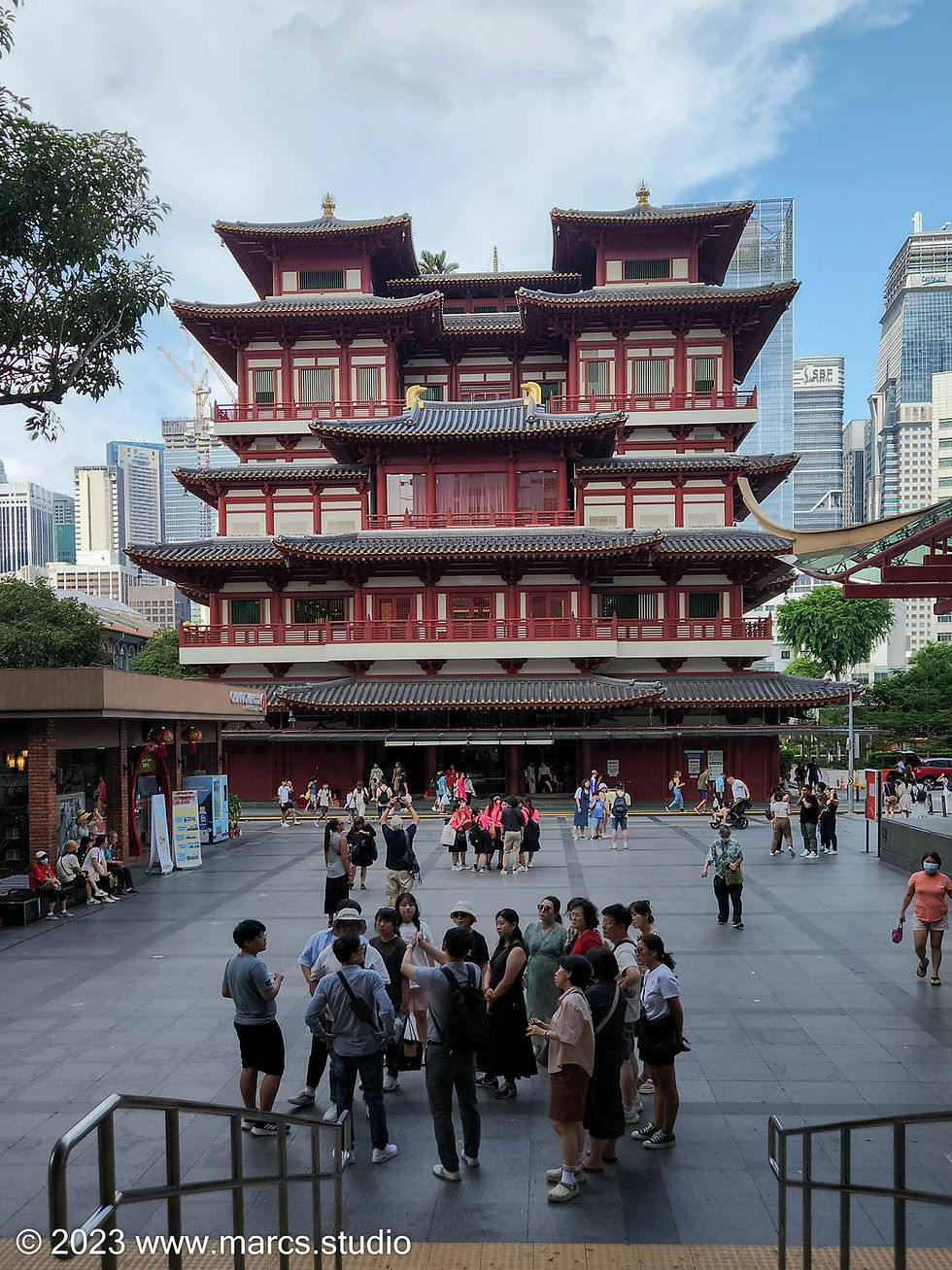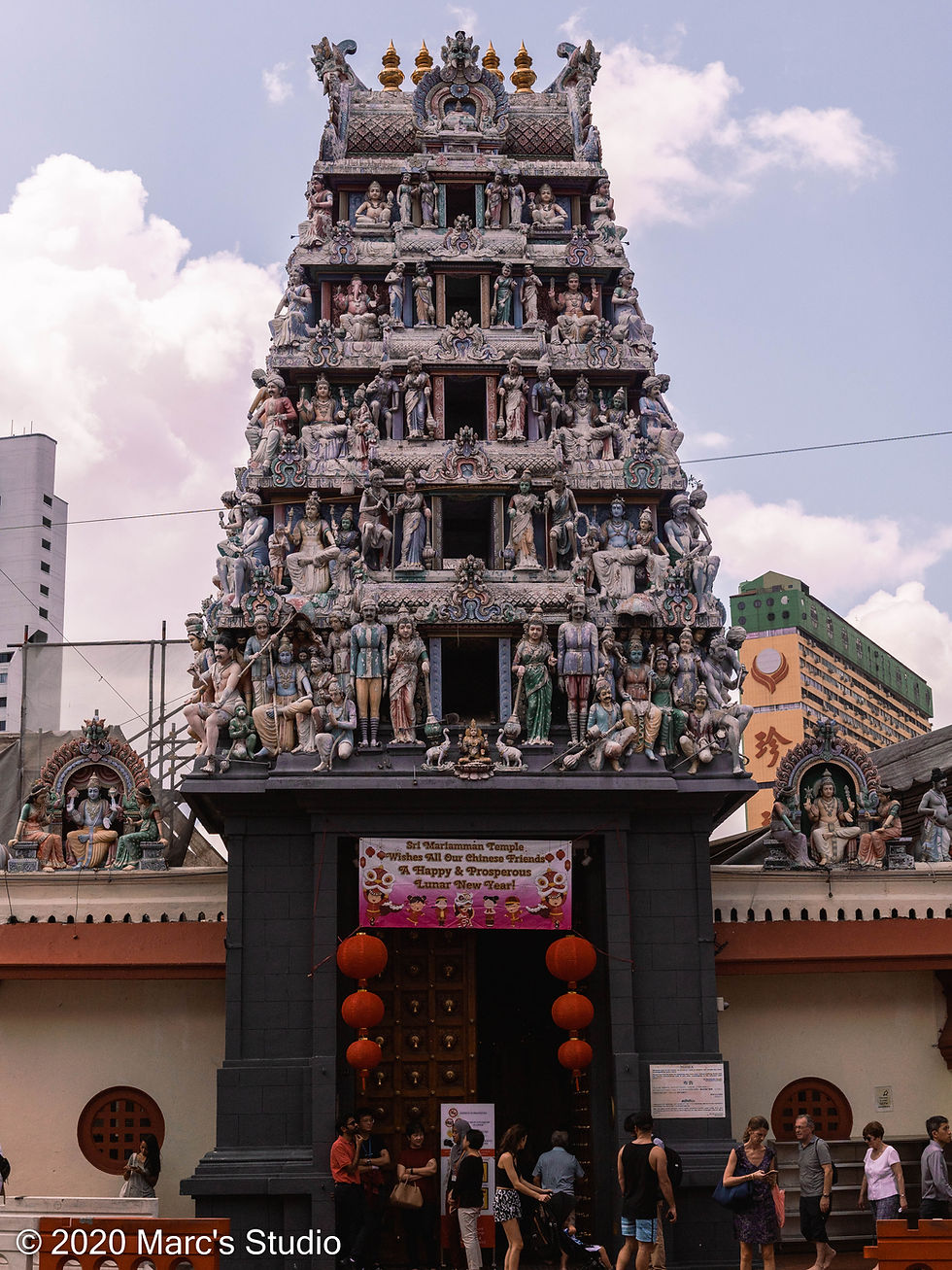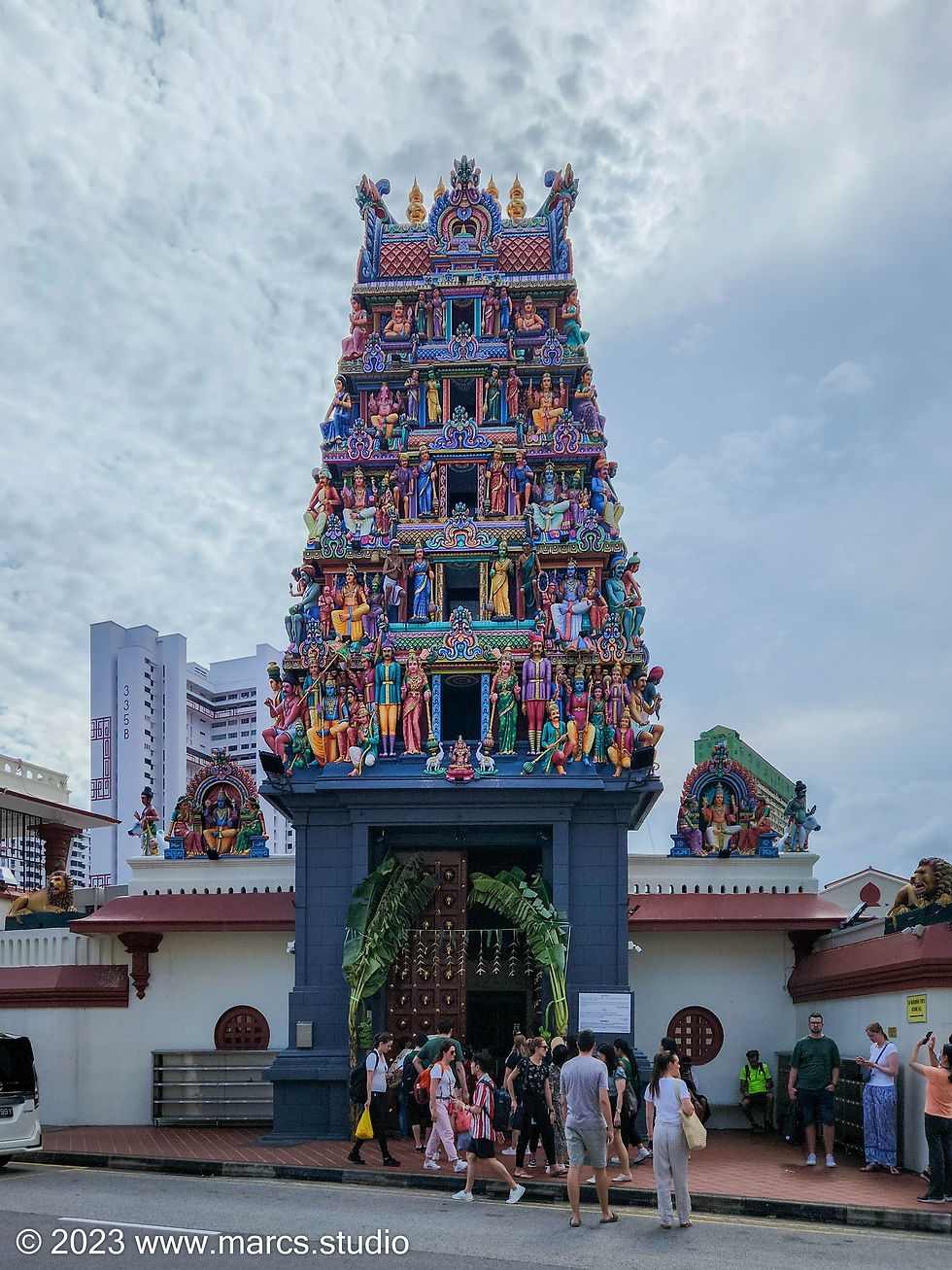Singapore Chinatown - South Bridge Road
- Marc Michelmann
- Apr 16, 2022
- 5 min read
Updated: Jul 9, 2023

Chinese New Year, February 2020
South Bridge Road had been known in the early 1820s by this name, before a proper road was constructed. In early 1831, there were public complaints that the road was flooded knee-deep at high tides. Two years later, George Coleman, as the newly appointed superintendent of public works, headed the construction of North Bridge Road and South Bridge Road, which were built using convict labour.

No. 249 South Bridge Road, February 2021
Many of the shophouses at South Bridge Road today were built in the 1930s, when the Art Deco architectural style was all the rage. Characterised by simple lines and geometric shapes that mimic machinery, Art Deco buildings feature streamlined designs for a contemporary look.
Typical of most shophouses, the ground floor was opened to the public and served as the location where business was carried out, while the upper floors functioned as living quarters for merchants or workers known as coolies.

No. 237-241 South Bridge Road, February 2021

No. 50 South Bridge Road, January 2021
Elgin Bridge
This was the first bridge across the Singapore River, linking North and South Bridge Roads. It was said to have existed as a wooden, native-built bridge at the time of Raffles' founding in 1819. In 1822, Lieutenant Philip Jackson built the second wooden footbridge here, called Presentment Bridge (also known as Jackson's Bridge and Monkey Bridge). Between 1827 and 1842, Presentment Bridge underwent constant repairs and was eventually demolished. Following that, a third wooden footbridge was constructed by J.T. Thomson and named after him. In 1845, Thomson's Bridge was widened to accommodate carriages. With increasing traffic flow, Thomson's Bridge was later demolished and an iron bridge replaced it in 1862 and was named Elgin Bridge after the Governor-General of India, Lord Elgin (1862-1863).
The eighth Earl of Elgin was in Singapore on his way to China to take up the post of British Plenipotentiary in China when news broke out of the Indian mutiny in May 1857. From Singapore, Lord Elgin dispatched a shipload of troops for India to save the British Empire.
This bridge was widened in the 1870s and eventually dismantled in 1925. In 1928-29 the current bridge was built linking the Chinese community on the south side of the river to the Indian merchants of High Street on the north side. It was opened by the Governor, Sir Hugh Clifford, on 30 May 1929.
It was on the left bank in the vicinity of the bridge that Raffles, Farquhar and a sepoy landed from a boat to meet Temenggong Abdul Rahman on 29 January 1819.
Elgin Bridge was known as thib tiau kio in Hokkien, meaning "iron suspension bridge".
Source: Singapore Street Names 4th Edition by Victor R. Savage and Brenda S.A. Yeoh, page 147

January 2021
Presentment Bridge (now Elgin Bridge)
This drawbridge was constructed in 1823 and was the only bridge across the Singapore River until 1840. Presentment Bridge linked the two towns of Singapore: the European town on the north side of the river and the Asian town on the south side of the river.
Besides the bridge, there were numerous boats that ferried passengers across the two towns. With the development of Commercial Square (Raffles Place) in the south side, the links between the two towns became more important and many bridges were built over time. In 1844, it became a footbridge and was renamed Thomson Bridge after John Turnbull Thomson, the Chief Surveyor. In 1846, it was widened to allow horses to pass through. The bridge was demolished in 1862.
Source: Singapore Street Names 4th Edition by Victor R. Savage and Brenda S.A. Yeoh, page 401
The earliest bridge to span the Singapore River was erected between 1822 and 1823, at the site where Elgin Bridge now stands. Constructed under the direction of Lieutenant Philip Jackson, the wooden footbridge was called Presentment Bridge and was also known as Monkey Bridge. It provided the only crossing over the river until 1840, when Coleman Bridge was constructed further upstream.
After many repairs between 1827 and 1842, Presentment Bridge was demolished and replaced in 1844 with a wooden footbridge designed by J. T. Thomson. It was then renamed Thomson’s Bridge. In 1845, the bridge was widened and modified to accommodate carriages.
In 1862, Thomson’s Bridge was replaced by an iron bridge imported from Calcutta. Built by the engineer George Lyon, the structure was named Elgin Bridge, in honour of Lord Elgin, the Governor-General of India. Elgin Bridge was widened and strengthened in 1886 to accommodate tramways.
Elgin Bridge was closed on 23 December 1926 and dismantled in January 1927 for reconstruction to keep up with the volume of vehicle and pedestrian traffic. The new structure was designed by municipal bridge engineer, T. C. Hood, who also supervised its construction. Two years were spent laying the foundations of the bridge, which involved sinking six caissons into the river bed. The steel framework of the bridge was fabricated in Glasgow and assembled on the North Bridge Road side, before being towed over the river as one complete structure on 30 October 1928.
Officially opened to traffic on 30 May 1929, the present Elgin Bridge is the fourth to be built on the same site. It is supported by three arches with slender hanging columns carrying the deck. It has steel frames encased in concrete. The bridge’s cast-iron lamp posts and roundels were designed by Italian sculptor Cavalieri Rodolfo Nolli.
Elgin Bridge was restored in 1989 as part of the master plan to beautify the Singapore River. Two pedestrian underpasses on both ends of the bridge were opened in 1991 and 1992. Elgin Bridge was given conservation status by the Urban Redevelopment Authority on 3 December 2009. In August 2019, it was announced that Elgin Bridge, Cavenagh Bridge, and Anderson Bridge would be collectively gazetted as a National Monument.

Buddha Tooth Relic Temple
The Buddha Tooth Relic Temple stands proudly along South Bridge Road. A relatively young temple first conceived in 1989 and only built in its current form and location in 2007, this traditional Tang-style design with its red lacquered walls is a colourful addition to the architecture in diverse Chinatown. As its name suggests, the temple houses the sacred Buddha tooth relic that the public can view, though only monks can actually enter the relic’s chambers. The temple is also a museum that is home to other revered Buddhist artefacts.

November 2022

November 2022

July 2022

July 2022

July 2023
Masjid Jamae (Chulia) is located at 218 South Bridge Road, on the corner with Mosque Street in the historic Chinatown area. One of several mosques built by Tamil Muslim migrants from south India, the present mosque was built between 1830 and 1835. Jamae Mosque was designated a national monument in 1974.


July 2022

July 2022
Sri Mariamman Temple
Chinatown is home to a multitude of places of worship for many religions, including the Sri Mariamman Temple, the first Hindu temple in Singapore. The temple, which worships the goddess Mariamman, was constructed in the early-19th century by southern Indian immigrants. It is in the architectural style of Dravidian temples, with a towering gopuram (entrance tower) decorated by six tiers filled with ornate sculptures of figures from Hindu mythology and culture. Historically, the temple was a centre of Hindu culture and offered help to immigrants; today, it retains many of its social, cultural and religious significance among the Hindu community. Visit the temple in the evening to see their daily Hindu rituals.

The postcard depicts a view along South Bridge Road. Built between 1827 and 1843 by Naraina Pillay, a Hindu trader from Penang, the Sri Mariamman temple with its ornate gate tower or ‘gopuram’ is on the left. In the background, the twin minarets of the Jamae Mosque can be seen. It was also known as Chulia Mosque as it was built by Chulia Muslims from India's Coromandel Coast between 1830 and 1855.

February 2021

January 2020

July 2023

July 2023

July 2023

July 2023
Comentarios